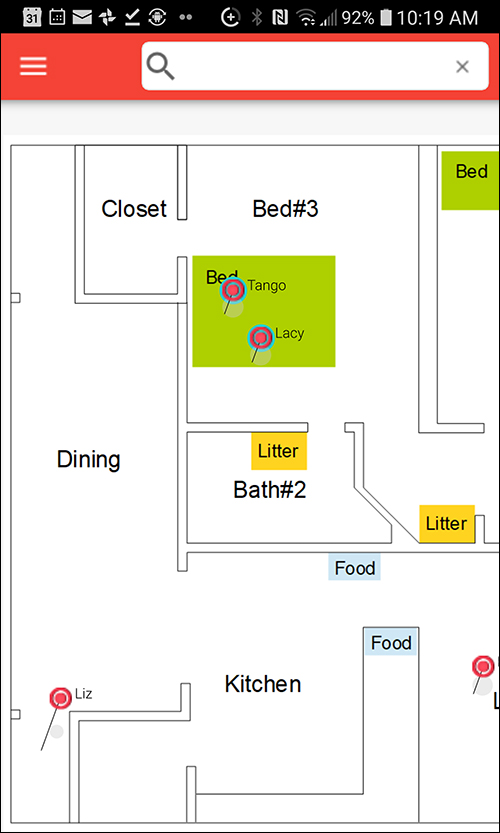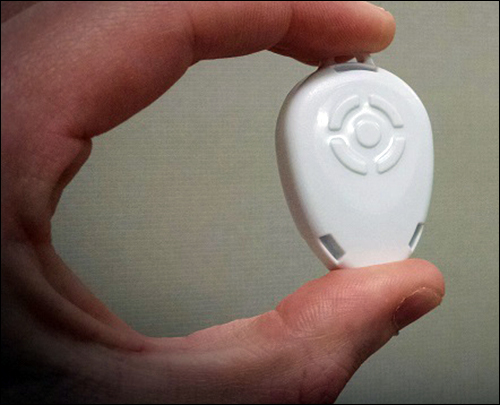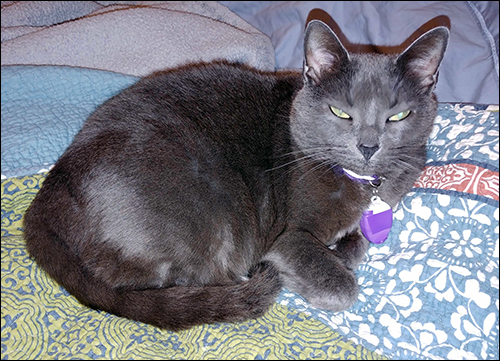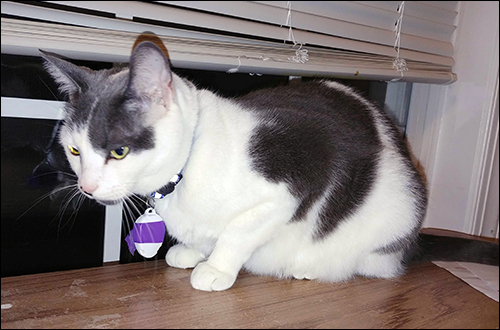Many traditional ultra-wideband (UWB) systems provide real-time location in industrial and commercial environments, but the technology’s future in more consumer-oriented use cases might be here. Wiser Systems, a Raleigh, N.C.-based asset-tracking technology company, has released a new UWB-based solution that will enable users to view the movements or locations of individuals, pets or household items.
The solution, known as Find-ly, employs the company’s battery-powered UWB Locator tags, as well as gateways and an app, to identify the locations and movements of people, pets or assets as they move around a home, an office or a health-care facility. To demonstrate one application, the company attached the tags to the collars of two cats and one television remote control in a Wiser employee’s home. It then displayed how the movements of the animals and the device could be tracked on a map of the home in real time, while also creating a history of those movements.

Until now, Wiser’s UWB Locator product has found its niche in factories and warehouses, according to Stephen Taylor, Wiser Systems’ communications director. Those include aerospace, automotive manufacturing and warehouse asset management. The solution is currently in use by several manufacturers of consumer goods, as well as automotive companies. Locator tags are also being attached to forklifts in warehouses, shipping and receiving yards, bus yards and garages.
Wiser’s proprietary antenna nodes are installed to create tracking areas, and Locator tags are then attached to assets. The company also offers its software and app to calculate timings and positions in order to generate location data, and to create zones. The solution can be offered in the cloud, but for industrial companies, the majority have wanted on-premise solutions. The Locator product was released in early 2017.
Elaine Rideout, the company’s founder and CEO, had the initial ambition of locating things around a home, and Wiser was founded based on her interest in developing a technology that would make finding things in a household easier. “That was an initial idea,” Taylor says, but the interest didn’t start in the consumer market. “The applications that were generating revenue and gaining traction were in heavy industry.”
That is now changing as the UWB tags have become increasingly affordable, and the release of UWB in the iPhone 11 and potentially some Android-based devices means that mobile phones may serve as UWB readers in the foreseeable future (see UWB in iOS 13 Could Prompt Widespread Growth). “That’s probably going to be more of a thing over the next few years,” Taylor predicts.

So far, Taylor says, health care and elder care are the two applications that have been the most attractive to customers. In the case of health care, the Find-ly solution is being tested to track the locations of nurses at care facilities—for instance, to monitor when a particular employee checked on a specific patient. That would enable the creation of a record of the patient’s care and ensure that he or she received care on a timely basis.
One application that could bring the technology into homes, Taylor says, is elder care for family members. “There are a lot of applications there with alerts based on zones,” he states. The system could detect a potential fall, for instance, if a rapid vertical drop were identified based on the location data captured. Other applications would allow families to know when a loved one started his or her day, approached a refrigerator or left home.
The cat-management demonstration showed that animals could be tracked around the home, even when moving at high speed. To conserve battery life, transmission rates could be customized. For example, a cat’s Locator could transmit several times a second, while a TV remote could ping the system only every few seconds.
A user could set up the Find-ly UWB antennas by mounting them on a wall via Velcro, tape or screws, or simply plug them into an outlet or power them via a USB charger, and then launch the Find-ly app. That system can operate without a floor plan, though users typically would drop a floor plan or image into the app or software to indicate where the tag was located. He or she could then begin inputting tag data into the system, linking each tag to a specific thing, person or animal.

In addition, the app enables the searching of categories, such as showing only cats or a laptop. For instance, a pet owner could view a cat’s movements while at work, then identify issues such as the pet hovering around its water dish, becoming suddenly inactive or leaving the house. Users can leverage custom scripts provided by Wiser or another provider to create rules, such as when alerts should be sent.
Typically, a single Find-ly Locator antenna could cover approximately a 10,000-square-foot area, depending on the number of barriers (walls or appliances, for example). A user could add about one antenna per 5,000 square feet of space. A minimum of four antennas is required, however, to create a tracking area. The solution is not yet commercially available, though the company expects to have a beta version released this year. The firm is likely to partner with smart-home technology providers, Taylor says, adding, “We’re still exploring more applications and how that affects requirements for physical devices.”


